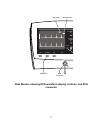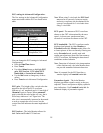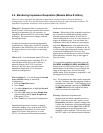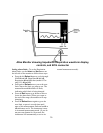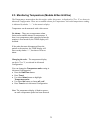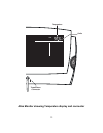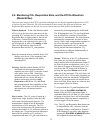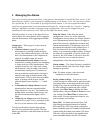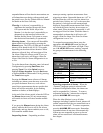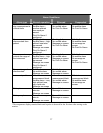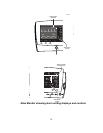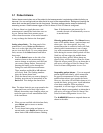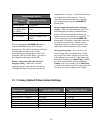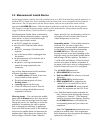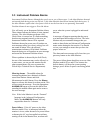25
3 Managing the Alarms
Four types of events can cause an alarm: 1) the patient’s measurement is outside the limits you set; 2) the
measurement is invalid; 3) the instrument is malfunctioning; 4) the battery is low. You can silence alarms
for a period (60, 90, or 120 seconds) by pressing the Silence button, or you can suspend the audible
signal for any patient alarm or measurement invalid alarm for 3 minutes under the “Francais” language
setting or indefinitely with other language setting configurations. Atlas can be configured to print
automatically when an alarm occurs. You can also adjust the alarm volume.
With this monitor, it is easy to set alarm levels, to
silence alarms for a short period, and to suspend a
selected measurement from triggering the audible
alarm.
Alarm types – Three types of events cause an
audible alarm:
• A Patient Alarm is triggered by a vital
measurement registering outside the limits
you set. That measurement display will flash
and, if the measurement is not suspended or
silenced, an audible alarm will sound.
• A Measurement Invalid Alarm means the
instrument is working properly, but something
is wrong with one of the measurements. This
could be caused by one of the leads coming
off the patient, or by the cable connection to
the instrument coming out. This alarm can
also mean that the actual patient vital sign is
outside of the range of measurement of the
Atlas Monitor. These events cause an audible
alarm, a message on the screen, and the
affected display turns to dashes “---” which
flash.
• An Instrument Problem Alarm means the
instrument has found an internal problem.
These alarms are very rare. They produce an
audible alarm, a message on the screen, and
the affected measurement display will be
blank.
• A Battery Low Alarm means that the battery
(models 622xx and 623xx) is running low and
has 10 or fewer minutes of life remaining.
To help you determine what an alarm means,
there are four principal alarm sounds. The four
alarm types and their visual indications are shown
in the table.
Print On Alarm - If the Print On Alarm
configuration is set to Yes in the Advanced
Configuration screen, then a new Patient Alarm or
a new Measurement Invalid Alarm will trigger a
print of the currently configured waveforms and
current measurements. The alarming values will
be marked with asterisks in the printed report. A
Print On Alarm will not occur for low battery
alarms or for instrument problem alarms. If alarms
are silenced or suspended, a Print On Alarm will
not occur, but if the alarm is still active when the
silence period is over or when the alarm is
unsuspended, a Print On Alarm will occur.
Alarm volume – The Alarm Volume is controlled
by a button labeled with a bell icon. Eight volume
settings are provided.
Note: The alarm volume cannot be turned
completely off with this button.
Saving volume settings – You can save your
volume settings for alarms and for pulse tone after
you change them, so that they become the initial
settings every time the Atlas Monitor is powered
on. After making the alarm and pulse volume
changes, press Date/Time to display the Other
Options menu, and press Print (or Freeze) to save
your settings. Press Date/Time to return to the
main screen. You may repeat this whenever you
want to change your settings.
Nurse Call – All alarms activate the Nurse Call
relay through a rear panel connector of models
622xx and 623xx. This relay can be connected to
either a normally open or a normally closed hospital
system to alert the central nurse station. The Nurse
Call relay will be activated for any condition that
causes an audible alarm at the unit. This means



